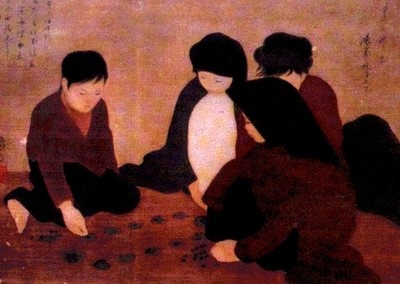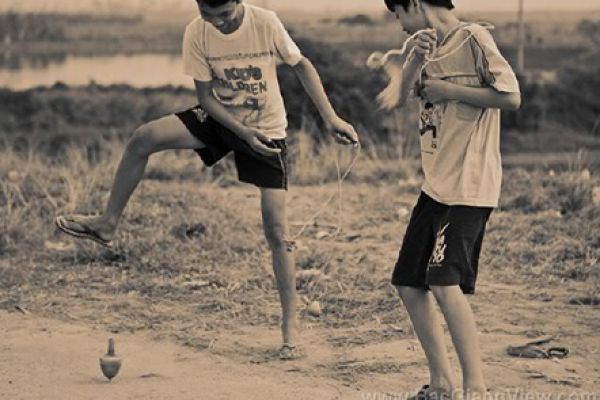 O an quan - Vietnamese folk games
O an quan - Vietnamese folk games
Either boys or girls, usually age’s seven to ten, play the two-person game of O an quan (literally "Mandarin's Box"). They draw a rectangle on the ground and divide it into ten small squares called "rice fields" or "fish ponds.
"They also draw two additional semi-circular boxes at the two ends of the rectangle, which are called"mandarin's boxes," hence the game's name. Each person has 25 small pebbles and a bigger stone.
Each player places the stone in one of the mandarin's boxes and five small pebbles in each of the other squares (see diagram above). Then the game begins. The first player takes up the contents of one square on his or her side of the board (but not a mandarin's box) and distributes the pebbles one by one, starting with the next square in either direction. (Since each square contains five pebbles at the beginning, the first move will distribute five pebbles to the left or right).
After the last pebble is distributed, the player takes the contents of the following square and repeats the distribution process. But if the following square is one of the mandarin's boxes, the turn ends and passes to the other player.
If the last pebble falls into a square that precedes one empty square, the player wins all the contents of the square following the empty square and removes these pebbles from the board. If this square is followed by another empty square, the player wins the contents of the square after that, and so on. However, if there are two or more empty squares in a row, the player loses his or her turn.
Once a player has taken pebbles from the board, the turn is handed to the other player. If all five squares on one player's side of the board are emptied at any time, that player must place one pebble he or she has aside back in each of the five squares so that the game can resume.
The game continues until the two mandarins' boxes have both been taken. At the end of the game, the player with more pebbles wins, with each of the large stones counting as ten points. If each player retrieves an equal number of points, then the game is a tie. O an quan remains deservedly popular among older children since it requires good counting skills and forethought in order to win.






 Tags:
Tags: 